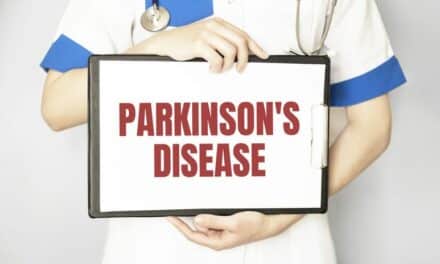
A number of studies using body weight support training have reported improvements in various gait parameters, including stride velocity, the amount of physical assistance needed, and the degree and type of assistive devices needed.
by Frank Hyland, PT, MS
According to a study initiated by the Christopher & Dana Reeve Foundation, nearly 1 in 50 persons in the United States are living with paralysis—approximately 5,600,000 individuals.1 Leading causes of paralysis, by order of frequency, include stroke, spinal cord injury, multiple sclerosis, traumatic brain injury, cerebral palsy, and post-polio syndrome, among other neurological conditions.1 Of those who reported being paralyzed, 36% said they had “a lot of difficulty” in moving; 29% said “some difficulty”; 17% said “a little difficulty”; and 16% said they were “completely unable to move.”2
Recovery of independent walking is one of the primary goals of rehabilitation. Traditionally, the success of achieving this goal for those with some form of paralysis has been achieved via conventional over the ground training (CONT) and therapeutic exercises designed to increase motor control necessary for walking. These interventions may include the use of various lower extremity orthoses and assistive devices that are designed to compensate for one’s locomotor deficits and may enable one to walk. However, the effects of stroke, spinal cord injury, etc, often make CONT and therapeutic exercises difficult at the onset of therapy. Also, CONT tends to hard wire compensatory outcomes which may limit the individual’s ability to fully achieve his or her potential for normalized functional recovery.3
TECHNOLOGIES FOR TASK-SPECIFIC, REPETITIVE ACTIVITY
To enhance and maximize an individual’s potential to recover locomotor function, relatively new treatment strategies have been developed and implemented. Activities that are task-specific, repetitive, and performed in a relatively normal biomechanical manner can promote neuroplastic changes that may enhance and lead to functional gait recovery.
Two major groups of task-specific activities for ambulation have been developed. One is a hybrid of CONT in which a number of therapists help support the patient while others assist in moving the limbs in a reciprocal gait pattern. The other option, body weight supported training (BWST), involves partial support of the patient’s weight via a harness while therapists move the lower limbs in a reciprocal gait pattern either over ground or over a treadmill. A subset of BWST uses a robotic device in place of a therapist to move the limbs in a reciprocal gait pattern.
BODY WEIGHT SUPPORT TRAINING
The advantages of BWST include beginning training before the patient can fully bear weight prior to developing adequate motor control and with greater safety and less fear of falling.4 BWST can improve walking ability over conventional rehabilitation in individuals with neurological injury, although the personnel requirements often necessary to provide BWST may limit its application. Also, the effectiveness of BWST in improving lasting locomotor functional recovery has not been well established. However, a number of studies have reported improvements in various gait parameters, including stride velocity, the amount of physical assistance needed, and the degree and type of assistive devices needed.4,5,6
EXOSKELETON TRAINING
Exoskeleton robotic-assisted devices were developed, in part, to resolve the challenging effort required by therapists to assist and guide limb movement. Exoskeleton robotic-assisted devices provide consistent symmetrical assistance to facilitate Locomotor Training (LT). Exoskeleton-assisted locomotor training (EALT) is a hybrid of the two previous training models. EALT allows for early participation despite severity of injury, reduces the intensity of therapy assistance, optimizes the benefit of overground training, and has the potential to be utilized in the home setting. Early exoskeleton-assisted walking by individuals who have sustained a stroke, spinal cord injury, or other neurological condition may attain recovery levels faster, on a higher plateau, or both.
These EALT devices are wearable bionic suits that enable individuals with lower extremity weakness to stand up and walk over ground with a relatively natural, full weight-bearing, reciprocal gait. These provide robotic-assisted walking by driving the patient’s lower extremity joints through a desired trajectory in order to obtain a user-specified motion. They have been used for a wide range of patients who have suffered from stroke, spinal cord injury, and other neurological conditions with lower extremity motor weakness. Studies have demonstrated that EALT for individuals who have sustained spinal cord injury is beneficial in improving gait speed and endurance.
One such device recently developed for EALT in addition to having the previously mentioned benefits also has the feature of “variable assistance.” The assistance level provided by the exoskeleton can be adjusted either unilaterally or bilaterally based on the individualized needs of each patient.
To illustrate the impact that EALT can make for a person with spinal cord injury, a case study will be used.

Exoskeleton-assisted locomotor training is a hybrid training model that allows for early participation despite severity of injury, reduces the intensity of therapy assistance, optimizes the benefit of overground training, and can potentially be used in the home setting.
CASE STUDY
Patient: 49-year-old male status post C3-C6 ASIA C traumatic spinal cord injury sustained during a body surfing accident. He underwent C3-C6 anterior/posterior fusion.
Rehabilitation Course of Treatment: Twelve days after injury, the patient was transferred to an inpatient rehabilitation facility, where he remained for 8 weeks. He was then discharged home with the assistance of family and an aide. At the initiation of outpatient therapy, he required moderate assistance for bed mobility, sit-pivot transfers, and was modified independent in power wheelchair mobility. His bilateral lower extremity strength was 2-/5 to 2/5 throughout. He was unable to take any steps. Outpatient rehabilitation consisted of transfer training, mobility training, strengthening exercises, activities of daily living, and locomotor training.
Exoskeleton-assisted locomotor training was initiated 17 weeks after onset of injury and consisted of 54 sessions—three times per week for 18 weeks. The overall objective of EALT was to achieve independent community walking at a safe gait velocity with the minimum of assistive devices. As the patient progressed, powered assistance from the exoskeleton was reduced. Throughout the course of his outpatient rehabilitation, he continued to maximize functional mobility, experienced strength gains, and experienced steady improvement in locomotor functioning.
Current Functional Status: The patient now ambulates up to 3,000 feet with a single-point cane, modified independent, and does not require AFOs. Gait velocity of 0.98 meters/sec was achieved. This exceeds the threshold for community ambulation of 0.8 meters/sec. His strength test for bilateral lower extremity is 4/5 with the exception of decreased hip abduction and hip extension bilaterally (3/5). He is now classified as ASIA D.
The objective of this article is to present evidence for the various forms of locomotor training for individuals who have sustained neurological injuries. Effective rehabilitation strategies of the neurologically impaired patient should be based on evidence-based motor learning principles and therapeutic interventions that promote neuroplasticity and enhance functional recovery. Plasticity and motor learning in the central nervous system are dependent upon the provision of specific sensory input associated with the proper performance of the desired motor activity, followed by repetitive performance of that task. The recent development of advanced body weight support systems and robotic exoskeletons that enhance the patient’s ability to learn complex, dynamic motor performance skills are leading to new and effective approaches for locomotor training. RM
Frank Hyland, PT, MS, is executive director of Good Shepherd Rehabilitation Network. He has held numerous clinical and administrative roles since joining the organization in 1981 and has been instrumental in developing Good Shepherd’s nationally recognized, leading-edge clinical programs. He oversees inpatient and outpatient rehabilitation for Good Shepherd’s four service lines: Neurorehabilitation, Pediatrics, Musculoskeletal-Orthopedics, and Cardiopulmonary-Complex Medical. For more information, contact [email protected].
References
1. Stats about paralysis. Available at: https://www.christopherreeve.org/living-with-paralysis/stats-about-paralysis. Accessed September 6, 2016.
2. Prevalence of paralysis study. Available at: http://s3.amazonaws.com/reeve-assets-production/8112REPTFINAL.PDF. Accessed September 6, 2016.
3. Behrman AL, Bowden MG, Nair PM. Neuroplasticity after spinal cord injury and training: an emerging paradigm shift in rehabilitation and walking recovery. Phys Ther. 2006;86:1406–1425.
4. Dobkin B, Apple D, Barbeau H, et al. Weight-supported treadmill vs over-ground training for walking after acute incomplete SCI. Neurology. 2006;66:484–493.
5. Swinnen E, Duerinck S, Baeyens J-P, Meeusen R, Kerckhofs E. Effectiveness of robot-assisted gait training in persons with spinal cord injury: a systematic review. J Rehabil Med. 2010;42(6):520–526.
6. Hornby TG, Campbell DD, Zemon DH, Kahn JH. Clinical and quantitative evaluation of robotic-assisted treadmill walking to retrain ambulation after spinal cord injury. Top Spinal Cord Inj Rehabil. 2005;11:1–17.
SIDEBAR
Gait Mats Get the Complete Picture for Clinicians and Researchers
By Frank Long
After a stroke or neurological injury, an individual may experience a mobility impairment in the lower extremities. Measuring gait can be vital in developing a diagnosis that informs clinicians who will treat this population, and having accurate information about temporal-spatial data, pressure, and other objective measure of gait can be a valuable part of the overall rehabilitation plan. To capture these measures, rehab facilities and clinicians may look to the latest gait mat technologies available to the rehab arena.
What Gait Mats Can Tell Therapists
Among the current landscape of gait mat technologies are those that use walkways loaded with thousands of electronic sensors to measure data generated as a person walks across the mat. Manufacturers offer walkway designs in widths that can accommodate static standing and straight walking assessment as well as those large enough to allow an individual to turn or make other maneuvers. These walkways likewise can record pressure data from assistive devices such as a walker or cane. The gait mats can be combined to create walkways of various configurations.
A laptop computer is connected to the gait mat and loaded with specialized software designed to measure gait parameters such as step length, speed, and cadence. This software captures both visual and quantitative data that can be archived. Some manufacturers offer portable systems designed to set up in only a few minutes. Though they can be operated independently, some gait mat systems may be used in tandem with body weight support systems.
In addition to the stroke population, gait mats may also be a valuable tool for orthopedic cases. For example, after surgery walking patterns can be an important indicator of progress in functional gains among individuals who have had joint replacement. The versatility of gait mats can also provide utility to rehabilitation programs for amputees learning to use lower extremity prosthetics.

Gait mat technologies are used in the clinic as well as for research, providing data for numerous published studies.
Research Tool
In addition to being useful as a clinical tool for rehabilitation, gait mat technologies are used as a research tool and have provided data for numerous studies published in the medical literature. The data these systems can provide has been used across a wide swath of research where the investigation of gait is key. For example, in a study led by Michelle Blumenschine published this year in Journal of Child Neurology, a gait mat was used to analyze stride length, velocity, cadence, base of support, and percentage time in double support in the analysis of gait disturbance in Glut 1 deficiency syndrome, a genetic, metabolic disorder that can cause movement disorders.
Gait mat technology was also used in a study published this year in NeuroRehabilitation that investigated the effectiveness of yoked prisms to reduce the risk of falling among subjects with neurological impairments. Led by William V. Padula, this study used a customized, pressure-sensitive gait mat to measure changes before and after the test intervention.
And, specific to the post-stroke population, Tracy A. Dierks led a recent study about gait parameter changes during sustained walking in individuals with chronic stroke. This study included a 10-meter walk test and 6-minute walk test with spatiotemporal gait parameters measured via the gait mat.




